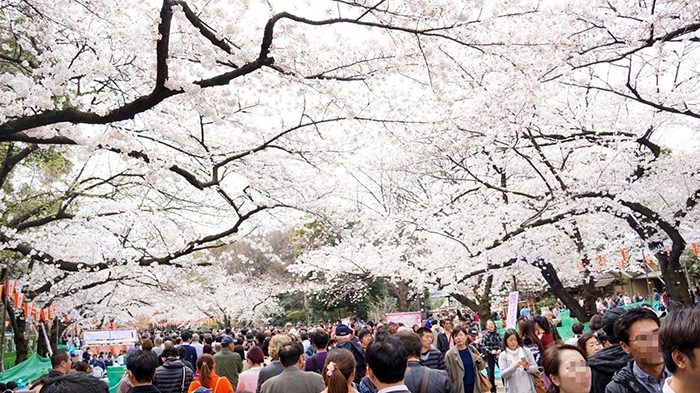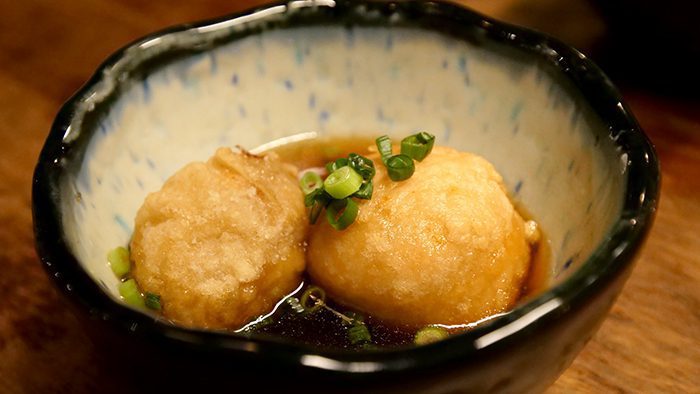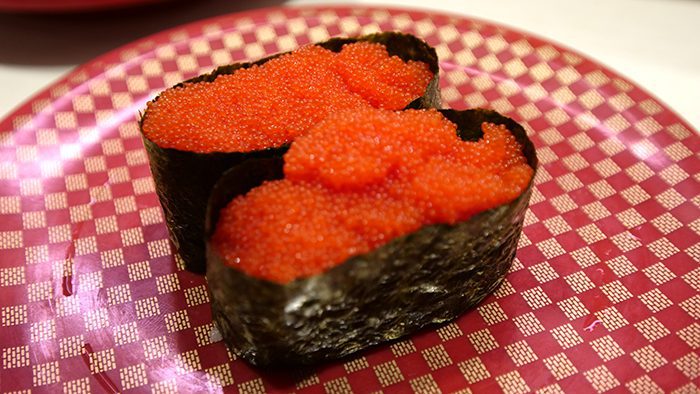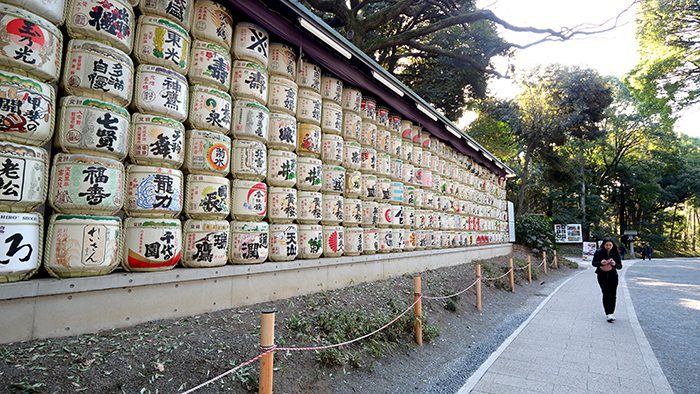As the most populous metropolitan area in the world, as well as the world’s largest urban area by overall size, there are countless things to see and do in Tokyo, Japan. While it’s often referred to as a city, Tokyo is actually a metropolitan prefecture, which is a unique blending of a city and a state, though it differs from both in many ways as well.

Tokyo started off as a small fishing village named Edo, which was fortified in the 12th century and became one of the largest cities in the world in the 18th century. Emperor Meiji, who was based in the then-capital, Kyoto, moved to Edo in 1869, causing the capital to also be moved to the city, which was renamed Tokyo. More than half of the city was destroyed in the Allied air raids of World War II, but the city was rebuilt after the war.

Today, Tokyo is a sprawling, bustling metropolitan area of over 38 million residents that blends its signature bright and colorful ultra-modern look and hyper-futuristic technology with traditional historic shrines and temples. It is also known as one of the safest and most livable cities in the world and is noted for its nightlife, shopping, cleanliness, public transportation system, dominance as the best food city in the world, and its helpful locals.

With so many notable distinctions, it’s no surprise that the list of things to see and do in Tokyo is seemingly endless. It can be enough to intimidate even the most seasoned traveler. I spent four days exploring Tokyo in January of 2019 and during that time, it became one of my favorite cities in the world.

I compiled a list of my favorite places in the city and wanted to share them to help other travelers build their own Tokyo itinerary. These are the things to see and do in Tokyo!

The Tokyo Skytree is a neo-futuristic broadcasting and observation tower that can be found in Tokyo’s Sumida ward. It is a cylindrical tower that was built to resemble a five-story traditional Japanese pagoda.

The tower was constructed between July of 2008 and February of 2012, and officially opened on May 22, 2012. At 2,080 feet in height, it is the tallest tower and second-tallest structure in the world. It is also earthquake resistant and is the main TV and radio broadcast site for the entire Kantō region, a geographical area of the island of Honshu that includes Tokyo.

I love getting a birds-eye view of the cities I visit, and there’s no place better in Tokyo for that than the Skytree’s two observation decks. From them, you can enjoy spectacular, 360° views of the city that go on for miles. You can even see Mount Fuji in the distance!
Check out How to Take the Narita Express into Tokyo, Japan

A ticket to the Tembo Deck, the lower of the Tokyo Skytree’s two observation decks at 1,150 feet above the ground, is 2,060 Yen, or roughly $18.55 U.S. It costs an additional 1,030 Yen, or roughly $9.28, to go to the highest observation deck, the Tembo Gallery, which offers views from 1,480 feet above the streets of Tokyo.

The Tokyo Skytree is also home to Musashi Restaurant and a gift shop. Just below the Tembo Deck is a section of glass floor that you can walk on that looks straight down at the street below.

The Tokyo Skytree is open from 8 a.m. to 10 p.m., but the final entry is at 9 p.m., so keep that in mind if you want to visit the observation decks at night. It’s a must-visit and is easily one of the top things to see and do in Tokyo!

Located right next to JR Ueno Station in central Tokyo is Ueno Park, a huge public park that was established in 1873. The park was initially part of Kaneiji Temple, a large temple that was built to protect Tokyo from evil. After the temple was nearly destroyed during the Boshin Civil War, its grounds became one of Japan’s first examples of a Western-style park.

Ueno Park is known as a fantastic spot to visit in the spring because of the large number of cherry blossom trees that bloom there. While the park is noted for its natural beauty, it is also home to lots of attractions, which attract over ten million visitors a year!

Notable places to visit within the park include the Ueno Zoo, the Tokyo National Museum, the National Museum of Nature and Science, Shinobazu Pond, the National Science Museum, the National Museum for Western Art, the Hanazono Inari Shrine, as well as the remnants of Kaneiji Temple, which include Kiyomizu Kannon Temple, Toshogu Shrine, and its five-storied pagoda, Gojunoto Tower.

Very few people were in the park when I visited it in January with my friend Shinichi, but the summer months can be quite busy. Between its cherry blossom trees and so many attractions, Ueno Park is, without a doubt, one of the best things to see and do in Tokyo!

If you’d like a bird’s-eye view of Tokyo that’s different from the ones offered by the Tokyo Skytree, a visit to the Roppongi Hills Observatory may be in order.

This observation deck, located on the roof of the Roppongi Hills Mori Tower, is a part of a larger group of observation facilities at the top of the tower known as Tokyo City View. Also included in Tokyo City View is the indoor Sky Gallery, a museum-quality space with stunning, floor-to-ceiling windows that hosts events and exhibitions.

The outdoor Sky Deck on the tower’s roof offers unobstructed, 360° views of Tokyo from 270 meters, or roughly 885 feet, above the streets of the city. It costs 500 Yen/$4.52 U.S. to visit. For your safety, you’ll be told to store your possessions, with the exception of your camera, in a locker before you go up.

The views of the city are breathtaking. They alone make the Sky Deck one of the top things to do in Tokyo. But if you visit Japan in the winter as I did, I also suggest wearing a warm coat, a scarf, a hat, and gloves, because the icy wind can be brutal!

Any foodie looking to have a fantastic night of top-notch food and strong drinks in Tokyo should put Gonpachi Nishi-Azabu Restaurant at the top of their list of dining options.
Check out Top Places to See and Eat at in Osaka, Japan

This Japanese restaurant, which looks like a traditional Japanese fortress or castle on the outside, is set up to look like a traditional Japanese house on the inside.

Gonpachi Nishi-Azabu Restaurant was the inspiration for The House of Blue Leaves in the movie Kill Bill, Vol. 1. Walking into the restaurant almost feels like you’re stepping right onto the Kill Bill set!

The restaurant is also a celebrity hotspot, so don’t be surprised if you spot Kobe Bryant, the Kardashians, Sylvester Stallone, or Kanye West while you’re there. My fellow Miami native FloRida just happened to be there the night I visited!

Gonpachi Nishi-Azabu Restaurant offers a wide variety of menu items and an extensive selection of delicious alcoholic drinks that are a part of their all-you-can-drink menu, which costs 2,678 Yen/$24.20 for 2 hours.

I highly recommend the salmon sashimi; the charbroiled oyster; the beef, chicken, and tomato yakitori; the fried tofu, beef, and spinach; the buckwheat soba noodles; the mochi ice cream; and my personal favorite, the shrimp fritter with fried rice noodles and chilies.

They are all to die for and make Gonpachi Nishi-Azabu one of the top things to see and do in Tokyo!

One of the best things about Japan’s culinary scene is the fun and innovative ways food is served. Conveyor belt sushi has long been a standout when it comes to raw seafood, but a chain of restaurants called Uobei has put its own spin on this Japanese staple.

At Uobei, each customer is provided with a convenient, multilingual tablet where they can choose between over eighty varieties of sushi.

Their order will then zip down the track and stop right at their table, usually within thirty seconds. This eliminates the need to flag down waiters and waitresses when you’re ready for your next course.

I visited the Uobei in Shibuya with my friend Kaz and was blown away, not only by the convenience of the ordering system, but also by the stellar quality of the food.

Everything I had was incredible, including the tuna with onions, salmon with onions, flounder, smelt roe, salmon roe, flounder fin, and tuna with mayonnaise and black pepper.

But of all the varieties I had, the one that really knocked my socks off was the minced tuna with onions. It was like a sensational tuna mash and I couldn’t get enough of it!
Check out 5 Places You Must Eat at in Kyoto, Japan

Next time you’re in Tokyo, do something kind for your taste buds and have a high-speed sushi meal at Uobei. Not only is the food fast and delicious, it’s also super affordable.

I ate over 20 pieces of sushi and my total came to only 1,209 Yen/$10.94! The prices and quality make Uobei one of the top things to see and do in Tokyo!

When you come to Tokyo, one thing you have to do is experience the rush of Shibuya Crossing, the world’s busiest intersection.

At this massive intersection, sometimes compared to New York’s Times Square because of the enormous television monitors and bright signs and advertisements on the surrounding buildings, roughly 2,500 pedestrians flood the streets in front of Shibuya Station every time the traffic lights change.

The lights all change at the same time and a scramble crossing begins, in which all vehicular traffic temporarily stops to allow shoppers, students, tourists, couples, commuters, and more to cross from every direction in a hectic, yet highly organized, manner.

It’s a wild thing to be a part of and is a uniquely Japanese experience you won’t forget anytime soon!

Tokyo is a city that mixes its ultra-modern future with its traditional past, and the city’s more traditional side can be seen at the famous Meiji Jingu Shrine, which was built in the years following the deaths of Emperor Meiji (also known as Meiji the Great) and his wife, Empress Shōken, dedicated to them, and completed in 1920. The original shrine was destroyed in the air raids of World War II but was rebuilt in 1958 after a public fundraising.

Located near Harajuku Station, this Shinto shrine is surrounded by an artificial forest, which was planted as citizens donated trees to beautify the shrine’s surroundings.

Straddling the gravel path to the shrine are is an enormous and imposing torii gate, which marks the beginning of the sacred area. You must stop and bow each time you pass beneath a torii gate.

The crunching sound of the gravel along the path is meant to calm your spirit so that you’re ready to pray by the time you reach the shrine, which consists of a fountain where you must cleanse yourself before entering, a large main courtyard with another large torii gate, a beautiful main hall, and more.

A visit to Meiji Jingu Shrine is a peaceful and educational experience in which you can learn about one of Japan’s two prominent religions. It’s an experience that easily ranks among my top things to see and do in Tokyo, and I highly recommend it!

If you’d like to take a trip back through time to Tokyo’s more traditional years, you can’t miss out on visiting Asakusa. This area of Tokyo is known for its beautiful temples and delectable street food, so you’re in for a treat if you love learning about food, history, and culture like I do.

The first of the two main attractions in Asakusa is the Nakamise, a centuries-old pedestrian-friendly shopping street that is lined with souvenir shops and food stalls selling sugary sweets and mouthwatering street food.
Check out Top 10 Things to See and Do in Kyoto, Japan

I highly recommend the kibi dango mochi balls, the strawberry and custard varieties of ichigo daifuku, the incredible red-bean-paste-filled Japanese pancakes known as ningyoyaki, the tasty menchi katsu meat patties, the deep-fried curry monja, and the delicious melon pan.

At the end of the Nakamise is Asakusa’s second main attraction, Sensoji Temple, a beautiful, 7th century Buddhist temple. Before you enter the temple, you must rinse your hands and mouth at the nearby fountain.
Looking for the Best Restaurants in Tokyo?

Then you go inside, pray, make a wish, and bow. You can even get your fortune afterward. Hope for a good one!

If you’ve come to Tokyo to have a good time, you have to take some time to explore Shinjuku, the entertainment, shopping, and business area around Shinjuku Station.

The area to the west of the station is known as the Shinjuku Skyscraper District, which is home to some of the tallest buildings in Tokyo, including the Tokyo Metropolitan Government Building and hotels such as the Park Hyatt, the Hilton, Keio Plaza, and my personal favorite, the Hyatt Regency Tokyo, which I stayed at for a couple of days.

Another popular area of Shinjuku is Kabukicho, an area that is dotted with restaurants, bars, nightclubs, and parlors where a popular game called Pachinko can be played.

In addition to the usual nightlife hotspots, Kabukicho is also known as Japan’s largest red light district, so tourists who venture into the area will also come across love hotels and an array of red light establishments that cater to all sexes and sexual orientations.

It is highly advised that people who visit this area be vigilant and beware of price-gouging and even drink spiking, practices that usually target unsuspecting tourists. Shinjuku is an amazing place to visit, definitely one of the top things to see and do in Tokyo, but be safe while you’re there!

When you visit Tokyo, you’ll need a comfortable place to relax in-between your sightseeing adventures, and take it from me, there are no better accommodations in the city than the ones at the Hyatt Regency Tokyo.

This five-star luxury hotel boasts 746 lavish rooms in 17 beautiful styles, six restaurants, a 24-hour gym, a Japanese breakfast, a Western breakfast, an indoor pool, and more.
Check out How to Ride the Bullet Train in Japan

Its central location in downtown Tokyo puts it in the vicinity of a number of popular attractions, including Shinjuku Gyoen National Garden, the Meiji Jingu Shrine, the Tokyo Opera City entertainment complex, and more.

When you stay at the Hyatt Regency Tokyo, you would be remiss to skip their Japanese buffet breakfast at Kakou Restaurant on the third floor.

This divine spread is available from 7 a.m. to 10 a.m. every morning and offers over 25 delicious, traditional options including oden, buttery beef, edamame, tofu balls, fish cakes, soba noodles, pounded yam, daikon, dried shrimp, and much more.

The Hyatt Regency Tokyo’s breakfast buffet will have you in traditional Japanese food heaven and craving more! This unbelievable feast is easily one of the top things to see and do in Tokyo! If you are looking for an alternative option check up the Tokyo Prince Hotel.

When you go to Japan, I can’t stress this enough: you have to try the food at the local convenience stores. Unlike the food that’s available at American convenience stores, the food at Japanese convenience stores is incredibly fresh, well-made, and super tasty.

Breakfast isn’t a huge thing in Japan, but meals from convenience stores, like fresh sushi, onigiri, and oden, are popular ways locals start their day as they head off to work. Convenience store culture is extremely popular; there are at least 10,000 of them in Tokyo alone and over 50,000 across Japan!
Check out Top 15 Things to Do Near Tokyo, Japan

There are three major convenience store chains in Japan: 7-Eleven, FamilyMart, and Lawson. Each of them has their own, brand-specific foods, but they also all sell similar items as well.

I visited all three and bought a wide variety of foods at each one, including sushi; several different onigiris containing salmon, seaweed, wasabi, and pollack roe; pork buns; a couple of different types of mochis; and more. I’ve eaten sushi all over the world, and the sushi I bought at FamilyMart is among the best I’ve ever had!

All of the food I bought there was fantastic and I can’t recommend them enough. Be sure to add at least one convenience store visit to your list of things to see and do in Tokyo!

Tokyo, Japan is unlike any other city in the world. Its unique culture is on full display from the moment you land at Narita Airport, and I promise, you’ll be blown away by its cleanliness, organization, and kind people long before you get to any of the outstanding cultural, historical, and recreational attractions. This city must been seen to be believed, so do yourself a favor and book a trip to Tokyo today!

NOTE: When you travel, you should buy travel insurance to protect yourself in case of an emergency. AXA Travel Insurance is the very best because it covers a wide array of issues. I use it on all my trips and swear by it. Buy your AXA Travel Insurance protection plan here!
Counter
101 Countries • 1432 Cities